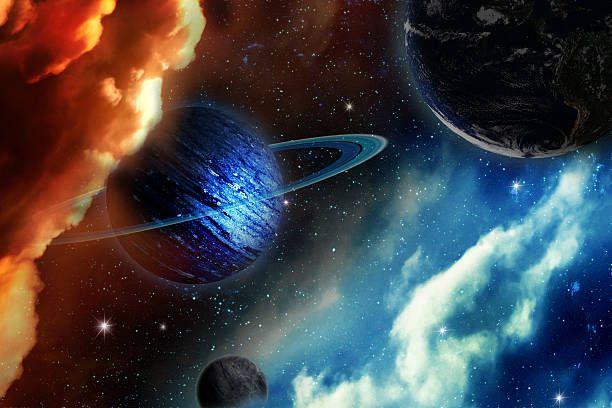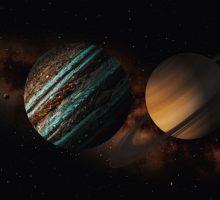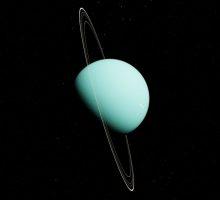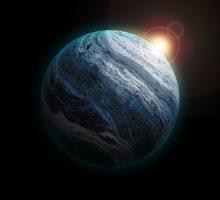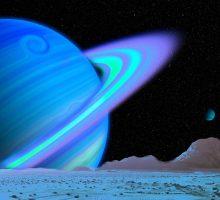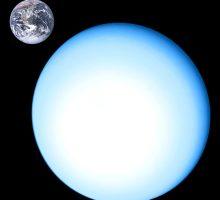Introduction:
Uranus, the seventh planet from the sun, is an ice giant that is often overshadowed by its larger neighbors. This planet is unique in many ways, including its extreme tilt, its blue-green color, and its mysterious weather patterns. In this blog, we will explore Uranus in depth, from its composition and structure to its moons and rings.
- Composition and Structure of Uranus
- The Tilt of Uranus
- Weather on Uranus
- Moons and Rings of Uranus
- Exploration of Uranus
- Methane on Uranus
- Uranus’ Magnetic Field
- Potential for Life on Uranus
- Uranus in Popular Culture
- Future Exploration of Uranus
- Uranus’ Rings
- Uranus’ Moons
- Uranus’ Seasons
- Uranus’ Interior
- Uranus and the Kuiper Belt
- Uranus’ Atmosphere
- Uranus and Climate Change
- The Discovery of Uranus
- Uranus and the Search for Extraterrestrial Intelligence
- The Cultural Significance of Uranus
Composition and Structure of Uranus
Uranus is composed mostly of rock and ice, with a small amount of gas. Its atmosphere is primarily made up of hydrogen and helium, but it also contains trace amounts of methane, which gives the planet its distinctive blue-green color. The interior of Uranus is divided into three layers: the rocky core, the icy mantle, and the gaseous envelope. The core is believed to be about the size of Earth and is made up of rock and metal. The mantle is mostly composed of water, methane, and ammonia ice, while the envelope is made up of hydrogen and helium gas.
The Tilt of Uranus
One of the most unique features of Uranus is its extreme tilt. Unlike most planets in the solar system, which have an axial tilt of less than 30 degrees, Uranus is tilted at an angle of 98 degrees. This means that its poles are almost parallel to its orbit around the sun, and its seasons last for more than 20 years each. Scientists believe that Uranus was knocked on its side by a collision with a large object early in its history, which caused its unusual orientation.
Weather on Uranus
Despite being an ice giant, Uranus has a surprisingly active atmosphere. The planet experiences strong winds that blow in opposite directions at different latitudes, causing massive storms and cloud formations. The winds can reach speeds of up to 560 miles per hour, making them some of the fastest in the solar system. Uranus also experiences extreme seasons, with the northern and southern hemispheres taking turns being in sunlight and darkness for long periods of time.
Moons and Rings of Uranus
Uranus has 27 known moons, most of which are named after characters from the works of William Shakespeare and Alexander Pope. The largest moon, Titania, is about half the size of Earth’s moon and has a heavily cratered surface. Another moon, Miranda, is known for its bizarre and varied terrain, with cliffs, canyons, and valleys all visible on its surface. Uranus also has a system of 13 rings, which are made up of dark particles ranging in size from dust to boulders.
Exploration of Uranus
Despite its many unique features, Uranus has been explored relatively little by spacecraft. The only spacecraft to visit Uranus was NASA’s Voyager 2, which flew by the planet in 1986. Voyager 2 provided scientists with the first detailed images and measurements of Uranus, revealing its strange tilt, active atmosphere, and unusual magnetic field. Since then, no other spacecraft have been sent to Uranus, although there have been proposals for future missions.
Methane on Uranus
Methane is an important component of Uranus’ atmosphere, and it plays a role in many of the planet’s unique features. The methane absorbs red light, giving Uranus its blue-green color, and it also contributes to the planet’s weather patterns. Methane clouds in the upper atmosphere can create visible bands and storms, and they may also be responsible for some of the planet’s unusual infrared radiation patterns.
Uranus’ Magnetic Field
Uranus has a unique magnetic field that is tilted at an angle of 60 degrees to its rotational axis. This is thought to be due to the planet’s extreme tilt and its unusual interior structure. Uranus’ magnetic field is also weaker than those of the other gas giants, and it is often distorted by the planet’s solar wind environment.
Potential for Life on Uranus
Although Uranus is not considered a likely candidate for hosting life as we know it, it is possible that microbial life could exist in the planet’s subsurface ocean. Uranus’ icy mantle is thought to contain a layer of liquid water, and this could provide a habitat for microorganisms. However, much more research is needed to determine whether this is a viable possibility.
Uranus in Popular Culture
Uranus has had a significant impact on popular culture, with many references to the planet appearing in literature, music, and film. Its unusual tilt and blue-green color have made it a favorite among science fiction writers and artists, and it has been featured in numerous movies and TV shows. The planet has also been the subject of many songs and albums, including Gustav Holst’s “The Planets” and the album “Uranus” by Japanese electronic musician Susumu Yokota.
Future Exploration of Uranus
There is still much to learn about Uranus, and scientists have proposed several missions to study the planet in more detail. These include the Uranus Orbiter and Probe mission, which would send a spacecraft to orbit Uranus and deploy a probe to study its atmosphere and interior. Another proposal is the Ice Giants Mission, which would send a spacecraft to study both Uranus and Neptune, providing valuable data on the composition, structure, and evolution of these ice giant planets.
Uranus’ Rings
Uranus has a system of 13 rings, which are composed of small particles ranging in size from dust to boulders. These rings were first discovered during a stellar occultation in 1977, and they have been studied extensively by space missions such as Voyager 2. The rings are believed to be relatively young, perhaps only a few hundred million years old, and they may be the result of a collision between Uranus and a large icy body.
Uranus’ Moons
Uranus has 27 known moons, which range in size from tiny, irregularly shaped objects to large, spherical moons. The five largest moons, Miranda, Ariel, Umbriel, Titania, and Oberon, were discovered by William Herschel in 1787 and 1789. These moons have complex geological features, including craters, canyons, and cliffs, and they are believed to have formed from the debris of a giant impact early in Uranus’ history.
Uranus’ Seasons
Uranus’ extreme tilt means that it experiences extreme seasonal variations. Each pole is pointed almost directly at the sun for about 20 years, while the other pole is in constant darkness. During these periods, the planet’s atmosphere and weather patterns undergo significant changes, including the formation of polar storms and the disappearance of the planet’s distinctive banding.
Uranus’ Interior
Uranus’ interior is believed to consist of a rocky core surrounded by a thick layer of icy mantle. This mantle is thought to contain water, methane, and other volatile compounds, and it may be responsible for the planet’s magnetic field. Recent studies have suggested that Uranus may also have a hot, rocky mantle layer, which could help explain some of the planet’s unusual features.
Uranus and the Kuiper Belt
Uranus is located at the outer edge of the Kuiper Belt, a region of space beyond Neptune that contains numerous icy bodies, including dwarf planets such as Pluto. Some scientists believe that Uranus’ extreme tilt and unusual moons may be the result of a collision with a large Kuiper Belt object early in its history. Studying Uranus and its moons could provide valuable insights into the formation and evolution of the Kuiper Belt and the outer solar system as a whole.
Uranus’ Atmosphere
Uranus’ atmosphere is primarily composed of hydrogen and helium, with small amounts of methane and other trace gases. The methane in the atmosphere gives the planet its blue-green color and plays a role in the planet’s weather patterns. Uranus’ atmosphere is also characterized by strong winds, which can reach speeds of up to 900 kilometers per hour, and large-scale weather systems, such as the planet’s polar vortex.
Uranus and Climate Change
Uranus’ atmosphere has been shown to exhibit signs of climate change, including variations in cloud cover and temperature. One study has suggested that changes in Uranus’ atmosphere may be linked to changes in solar radiation, as well as the planet’s extreme tilt. Studying Uranus’ climate could provide valuable insights into the effects of climate change on other planets in our solar system and beyond.
The Discovery of Uranus
Uranus was first discovered by Sir William Herschel in 1781. Herschel initially thought that he had discovered a comet, but further observations revealed that the object was in fact a new planet. Uranus was the first planet to be discovered using a telescope, and its discovery was a significant milestone in the history of astronomy.
Uranus and the Search for Extraterrestrial Intelligence
Uranus has been suggested as a potential target for the search for extraterrestrial intelligence (SETI). Some scientists have proposed using radio telescopes to search for signals from advanced civilizations in the direction of Uranus, as it is located in a relatively unexplored region of the sky. While the chances of detecting such signals are currently very low, studying Uranus and other planets could provide important insights into the conditions necessary for life to exist elsewhere in the universe.
The Cultural Significance of Uranus
Uranus has played a significant role in human culture throughout history. The planet’s name comes from the Greek god of the sky, Uranus, and its discovery marked a significant breakthrough in the understanding of the solar system. Uranus has also been the subject of numerous works of art, literature, and music, and it continues to capture the imagination of people around the world. As we continue to explore and learn more about Uranus, its cultural significance is likely to continue to grow.

